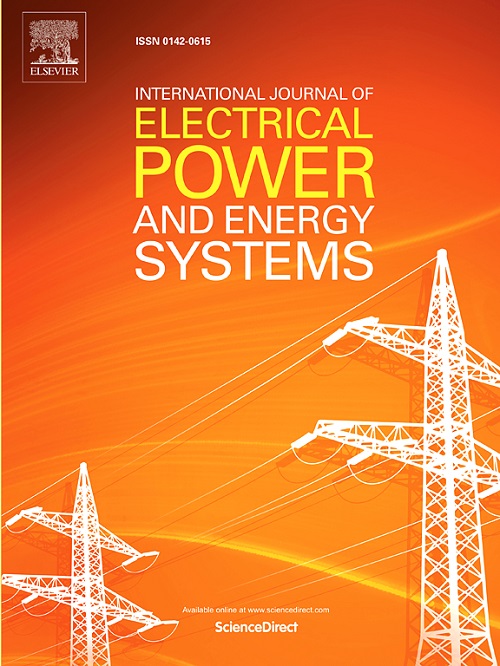Unmasking stealthy attacks on nonlinear DAE models of power grids
IF 5
2区 工程技术
Q1 ENGINEERING, ELECTRICAL & ELECTRONIC
International Journal of Electrical Power & Energy Systems
Pub Date : 2025-03-17
DOI:10.1016/j.ijepes.2025.110569
引用次数: 0
Abstract
Smart grids are inherently susceptible to various types of malicious cyberattacks that have all been documented in the recent literature. Traditional cybersecurity research on power systems often utilizes simplified models that fail to capture the interactions between dynamic and steady-state behaviors, potentially underestimating the impact of cyber threats. This paper presents the first attempt to design and assess stealthy false data injection attacks (FDIAs) against nonlinear differential algebraic equation (NDAE) models of power networks. NDAE models, favored in industry for their ability to accurately capture both dynamic and steady-state behaviors, provide a more accurate representation of power system behavior by coupling dynamic and algebraic states. We propose novel FDIA strategies that simultaneously evade both dynamic and static intrusion detection systems while respecting the algebraic power flow and operational constraints inherent in NDAE models. We demonstrate how the coupling between dynamic and algebraic states in NDAE models significantly restricts the attacker’s ability to manipulate state estimates while maintaining stealthiness. This highlights the importance of using more comprehensive power system models in cybersecurity analysis and reveals potential vulnerabilities that may be overlooked in simplified representations. The proposed attack strategies are validated through simulations on the IEEE 39-bus system.
揭开电网非线性 DAE 模型隐形攻击的面纱
智能电网本身容易受到各种类型的恶意网络攻击,这些攻击在最近的文献中都有记载。传统的电力系统网络安全研究通常使用简化模型,无法捕捉动态和稳态行为之间的相互作用,从而可能低估网络威胁的影响。本文首次尝试设计和评估针对电力网络非线性微分代数方程(NDAE)模型的隐形虚假数据注入攻击(FDIAs)。非线性微分代数方程模型能够准确捕捉动态和稳态行为,因此在工业领域备受青睐。我们提出了新颖的 FDIA 策略,可同时规避动态和静态入侵检测系统,同时尊重 NDAE 模型固有的代数电力流和运行约束。我们展示了 NDAE 模型中动态和代数状态之间的耦合如何极大地限制了攻击者在保持隐蔽性的同时操纵状态估计的能力。这凸显了在网络安全分析中使用更全面的电力系统模型的重要性,并揭示了在简化表示法中可能被忽略的潜在漏洞。通过在 IEEE 39 总线系统上进行仿真,验证了所提出的攻击策略。
本文章由计算机程序翻译,如有差异,请以英文原文为准。
求助全文
约1分钟内获得全文
求助全文
来源期刊
CiteScore
12.10
自引率
17.30%
发文量
1022
审稿时长
51 days
期刊介绍:
The journal covers theoretical developments in electrical power and energy systems and their applications. The coverage embraces: generation and network planning; reliability; long and short term operation; expert systems; neural networks; object oriented systems; system control centres; database and information systems; stock and parameter estimation; system security and adequacy; network theory, modelling and computation; small and large system dynamics; dynamic model identification; on-line control including load and switching control; protection; distribution systems; energy economics; impact of non-conventional systems; and man-machine interfaces.
As well as original research papers, the journal publishes short contributions, book reviews and conference reports. All papers are peer-reviewed by at least two referees.

 求助内容:
求助内容: 应助结果提醒方式:
应助结果提醒方式:


